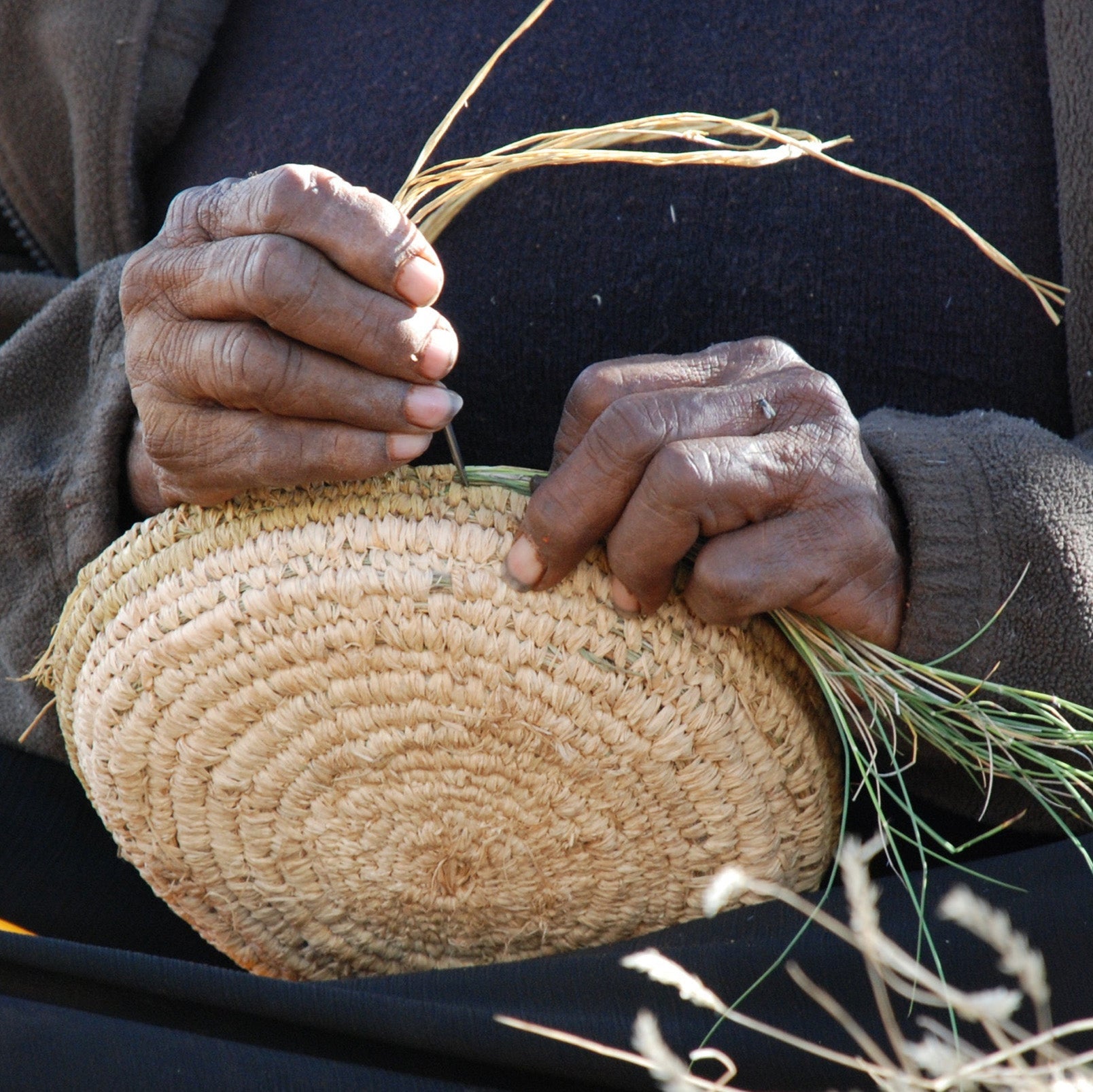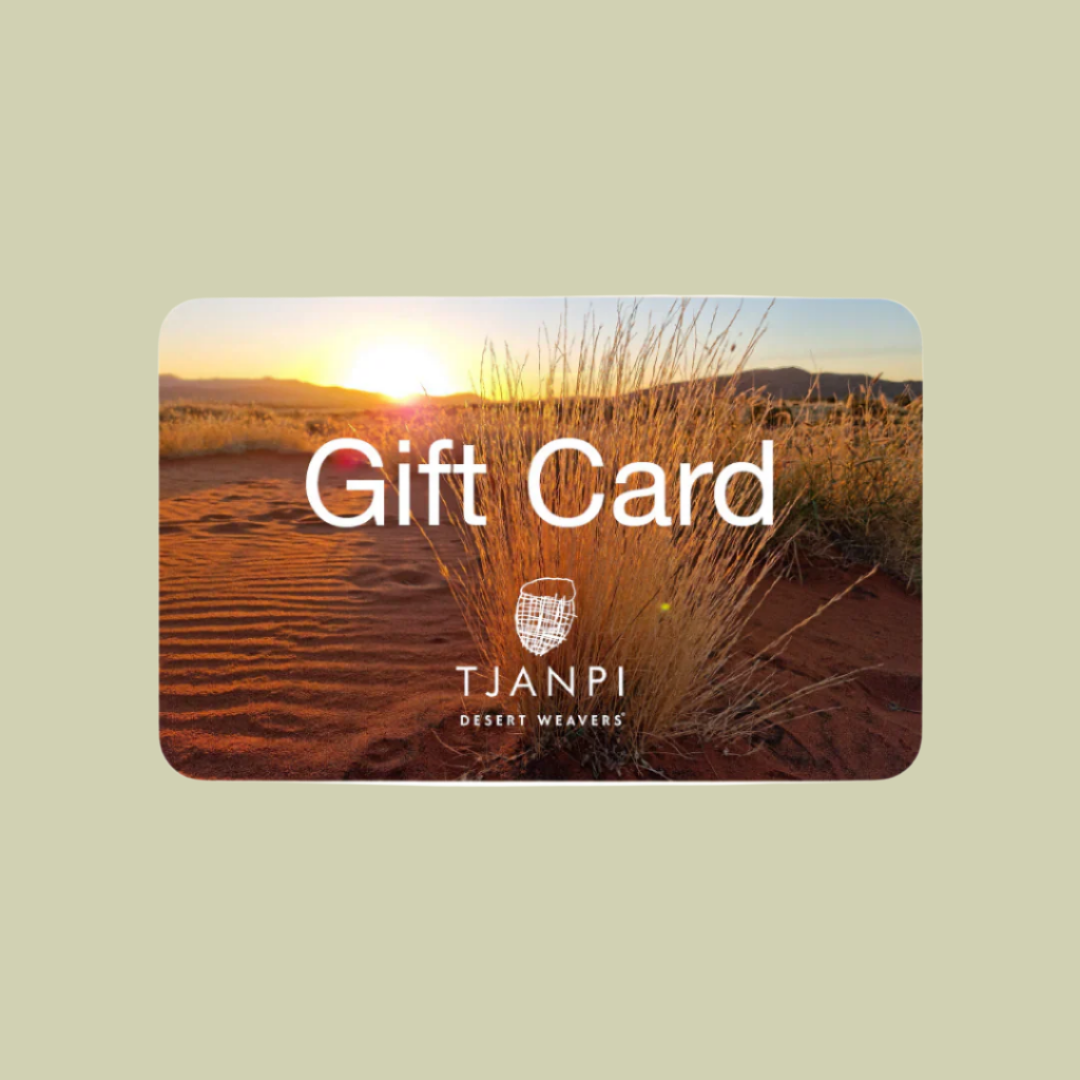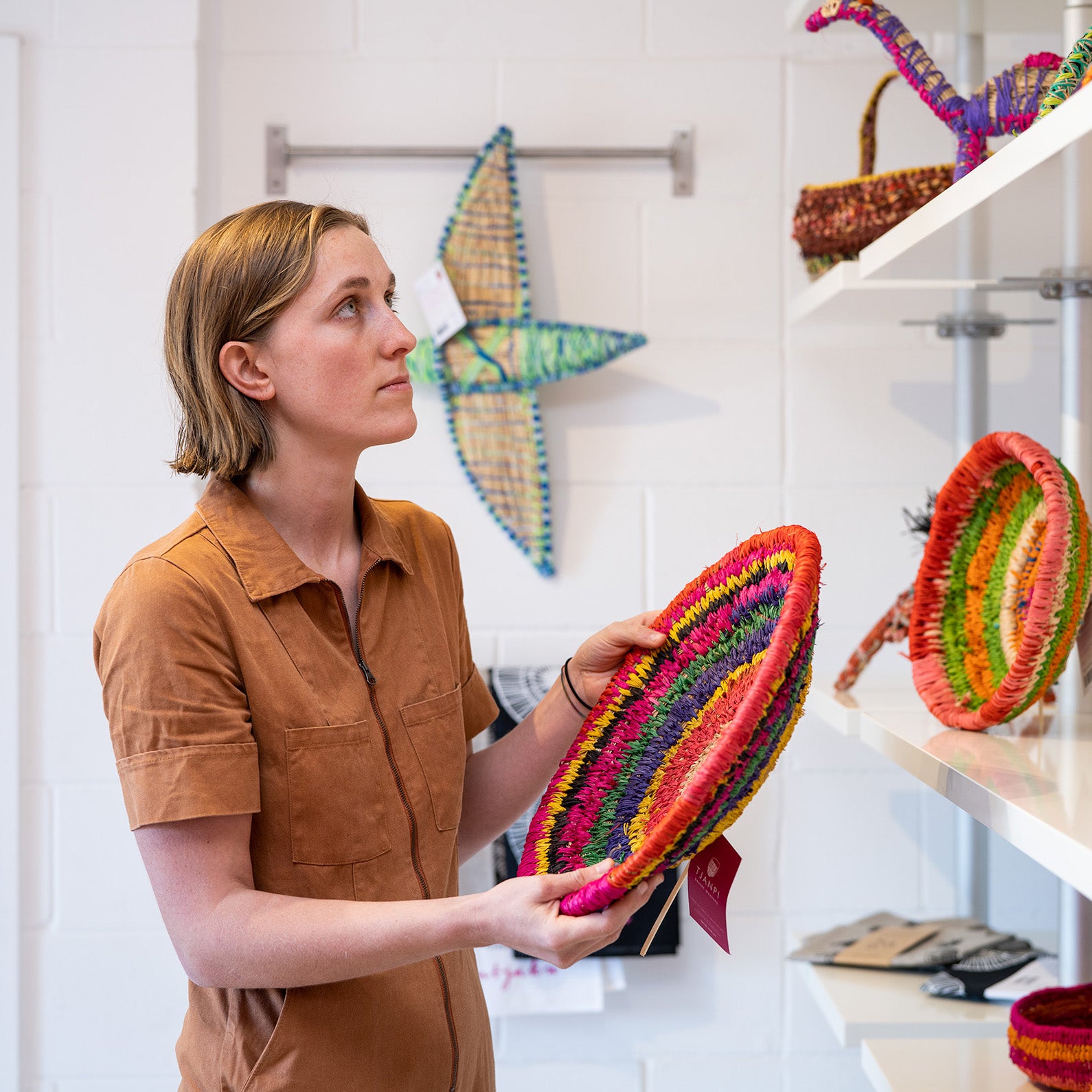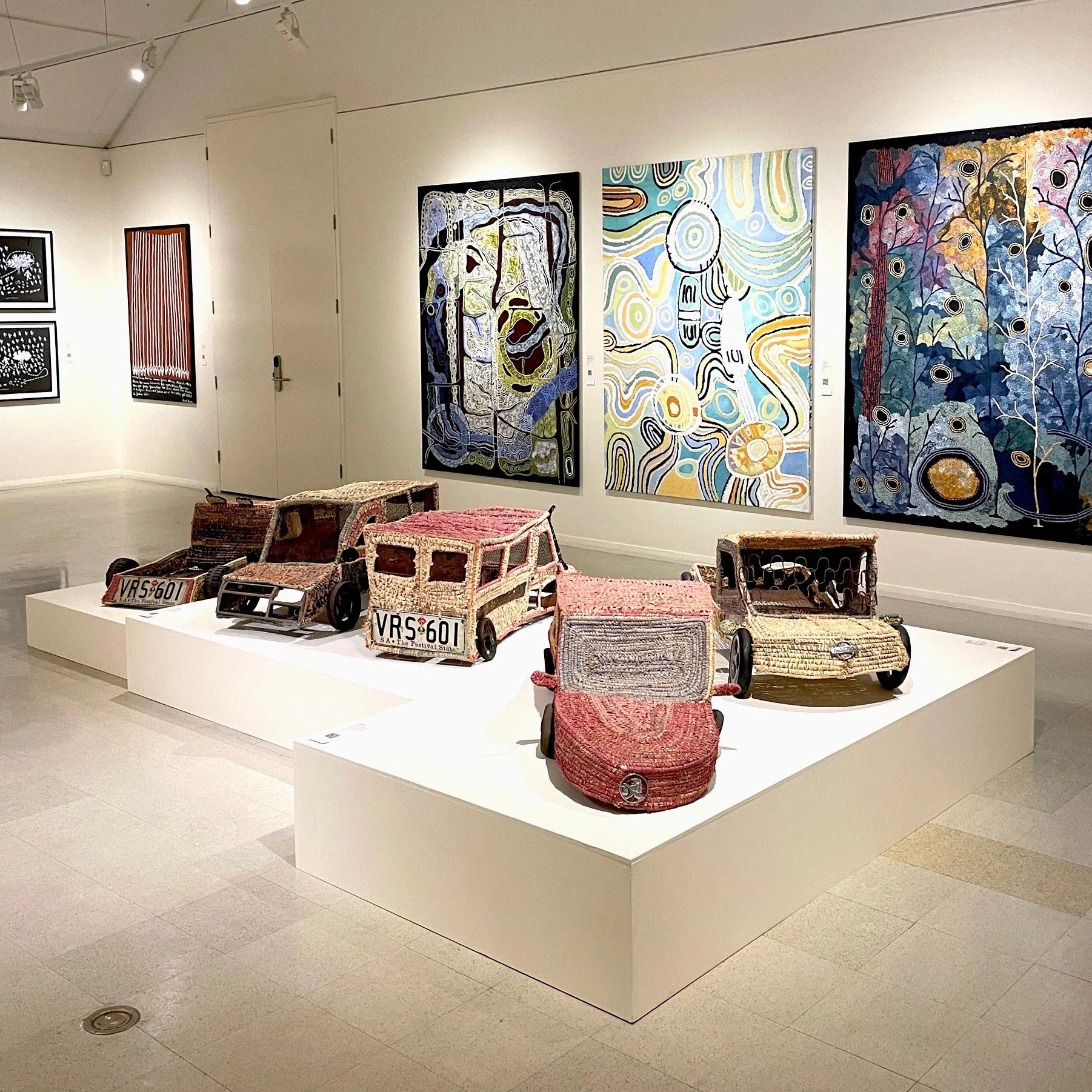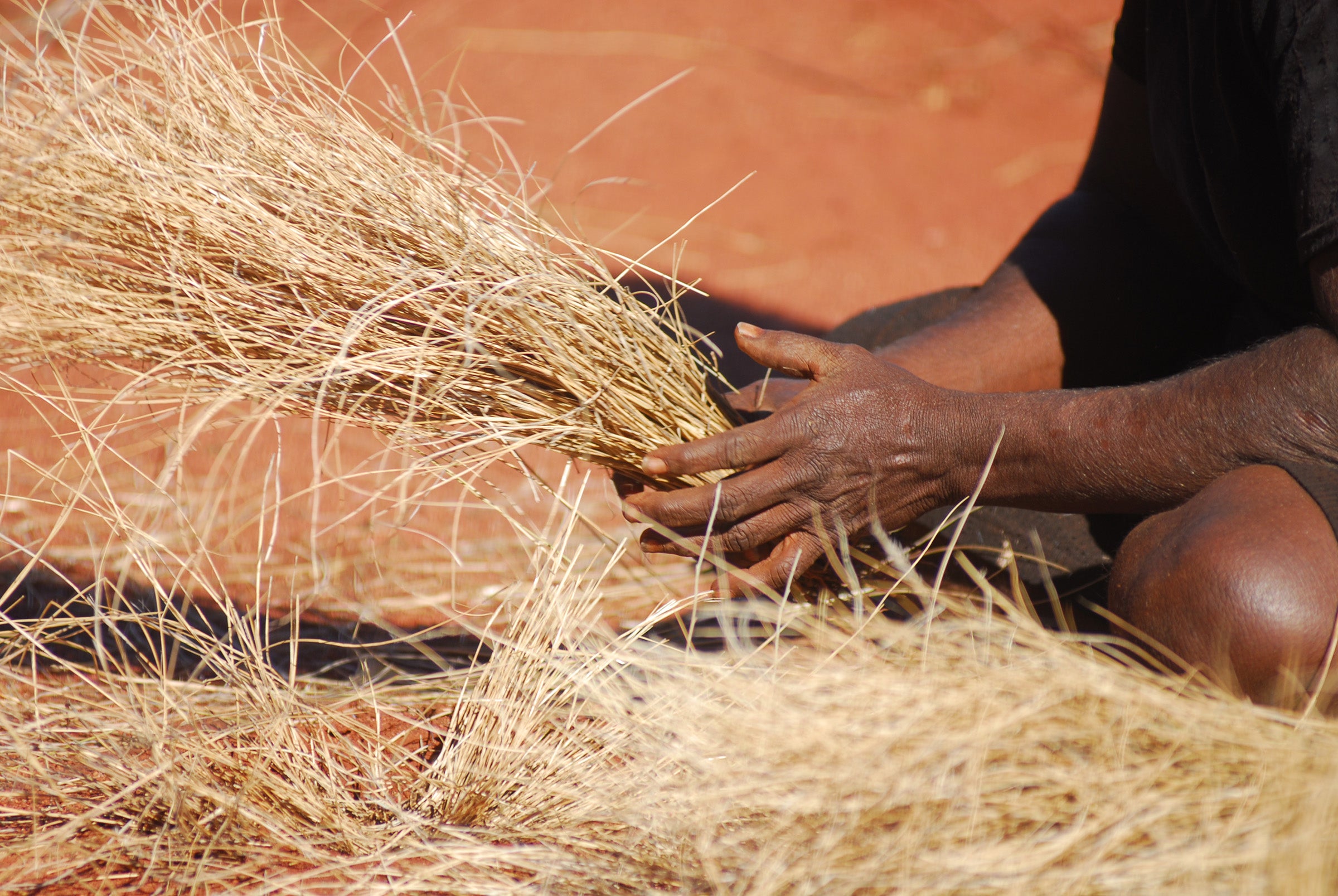Tjanpi means “native desert grass” in Pitjantjatjara. Artists and their families collect this native and accessible resource by hand, before utilising it as a core material in their fibre art.
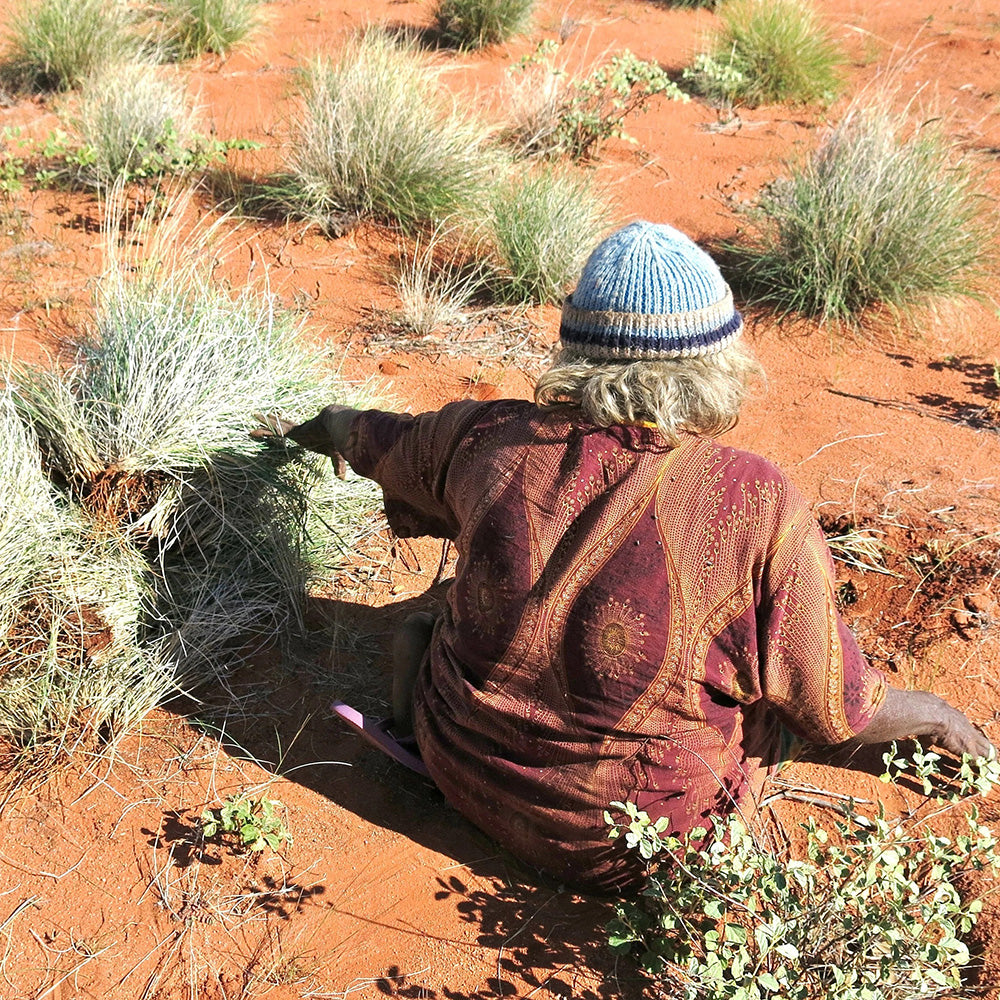
Tjanpi - Native Desert Grass
Tjanpi often forms the core structure of our baskets and sculptures. The pliability of certain grasses allows for creative shape-building, and its durable nature ensures Tjanpi works are strong and robust.
The main species of tjanpi used in our artwork are Minarri (Amphipogon sericeus), Grey-beard (Amphipogon sericeus) and Woollybutt (Eragrostis eriopoda).
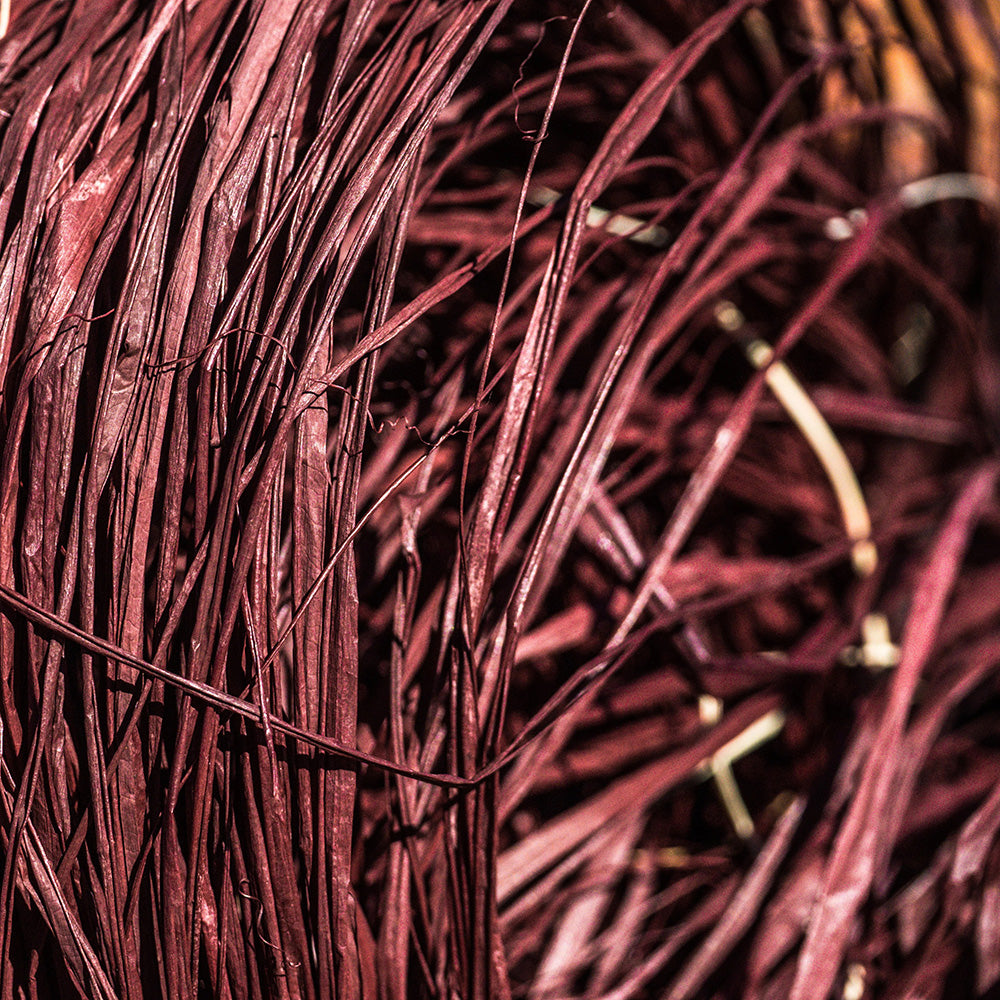
Raffia
Raffia is a natural fibre product derived from raffia palms, native to tropical regions of Africa, and particularly Madagascar.
We purchase large quantities of natural and commercially dyed raffia for artists to utilise as a reliable stitching material in their artwork. Raffia often brings bold colour and lovely layers of textural variation to fibre artwork. If an artist does not have the means or ability to collect native grass by hand, raffia can be used as the core material in a work, acting as both the inner and outer medium.
To produce softer and more nuanced colour variations, natural raffia is often dyed in-house at Tjanpi using commercial dyes. Natural raffia is at times hand dyed by artists using native plants and materials collected from Country, including Quandong bark, GrassTree, Mistletoe, and Spinifex.
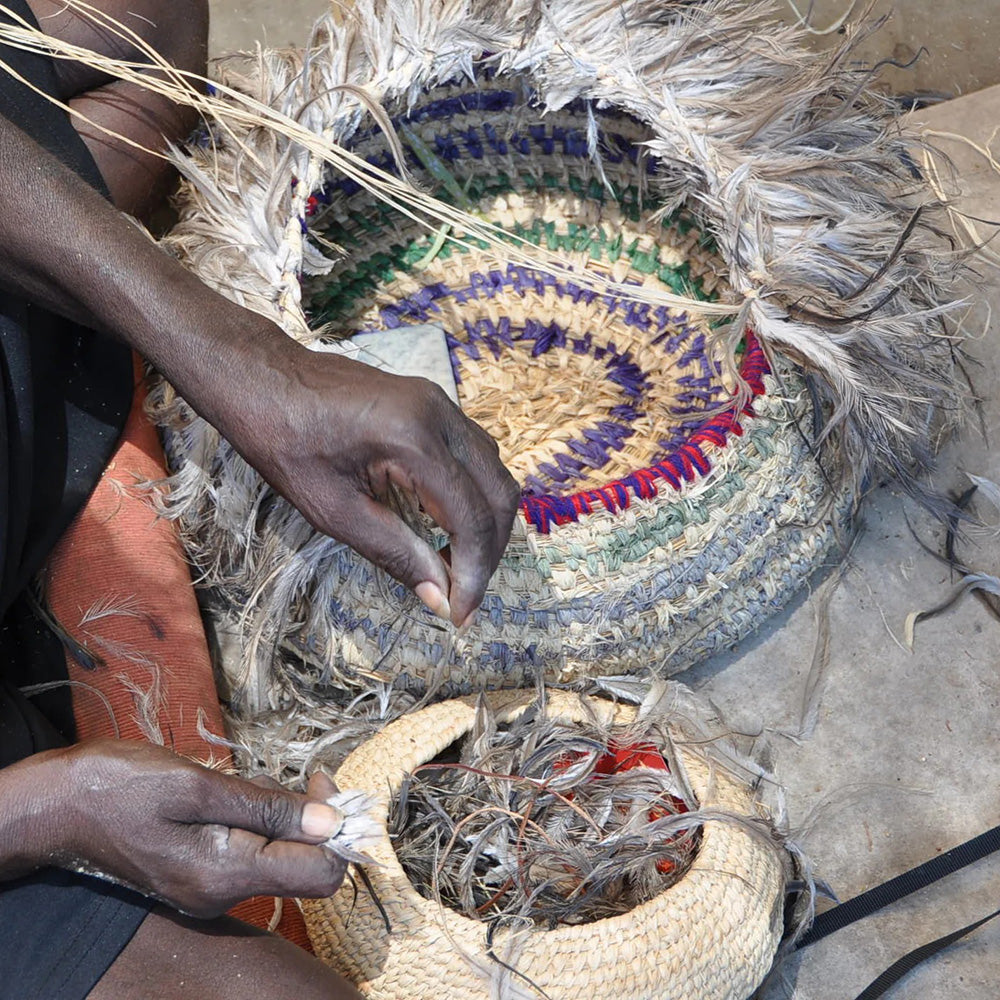
Wipiya - Emu Feathers
NPY people of the Central Desert region have long used kaḻaya/karlaya (emu) as a natural resource for food and materials, and you will sometimes find wipiya cleverly stitched into Tjanpi work as a form of embellishment or detail.
Tjanpi sources emu feathers from an ethical and sustainable Australian emu farm, where feathers are cleaned and treated on-site. A times, artists may use wipya sourced locally if it is available to them.
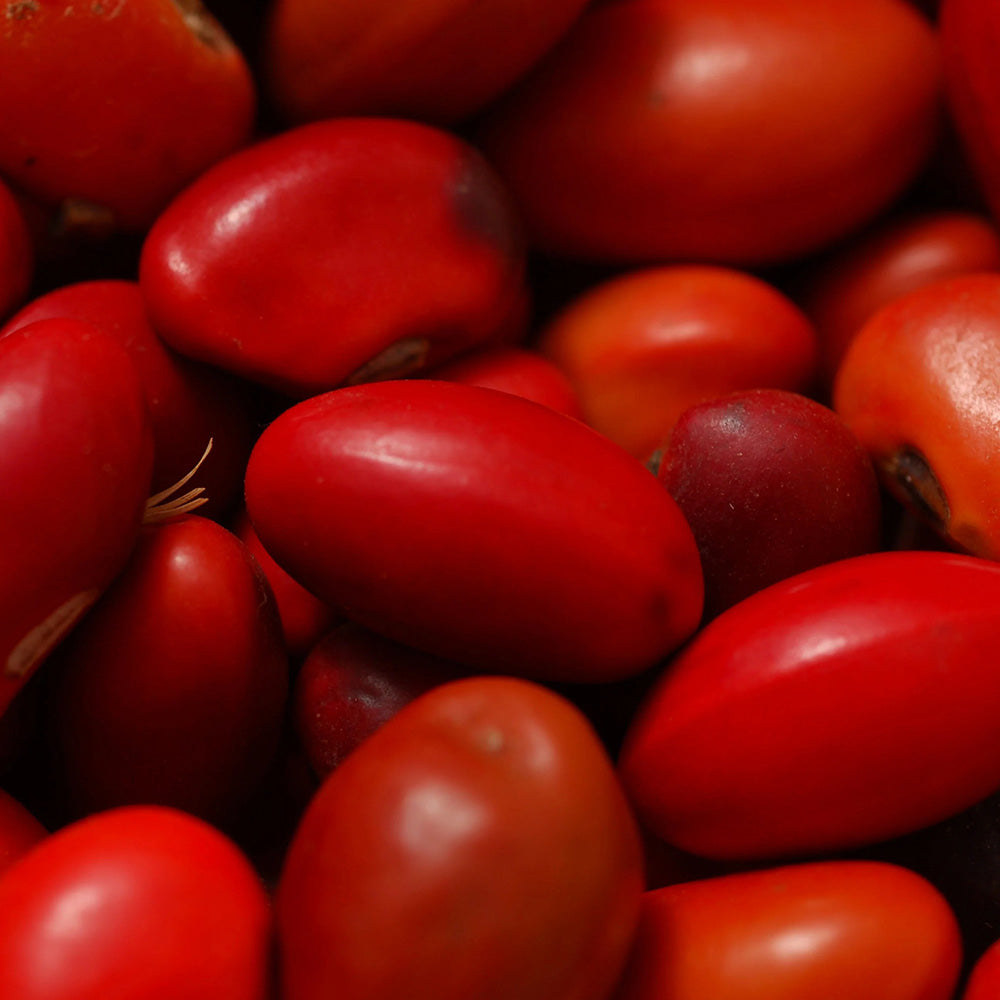
Ininti Seeds
Ininti seeds, from the bean tree or bat-wing coral tree (Erythrina Vespertilio), are collected by hand. When the season is right, ladies collect seeds and dry them out. Narrow pieces of wire are heated over a fire, and a hole is carefully burnt though the middle of each seed. They are then left to dry out.
Ininti seeds are strung together with wool, string or elastic to make beautiful jewellery pieces. Sometimes artists will stitch these into baskets and sculptures for decoration. The seed comes in different colours, ranging from soft yellows through to warm oranges and deep reds. They emit a strong, musky smell. The bean tree often features in Aboriginal mythology.
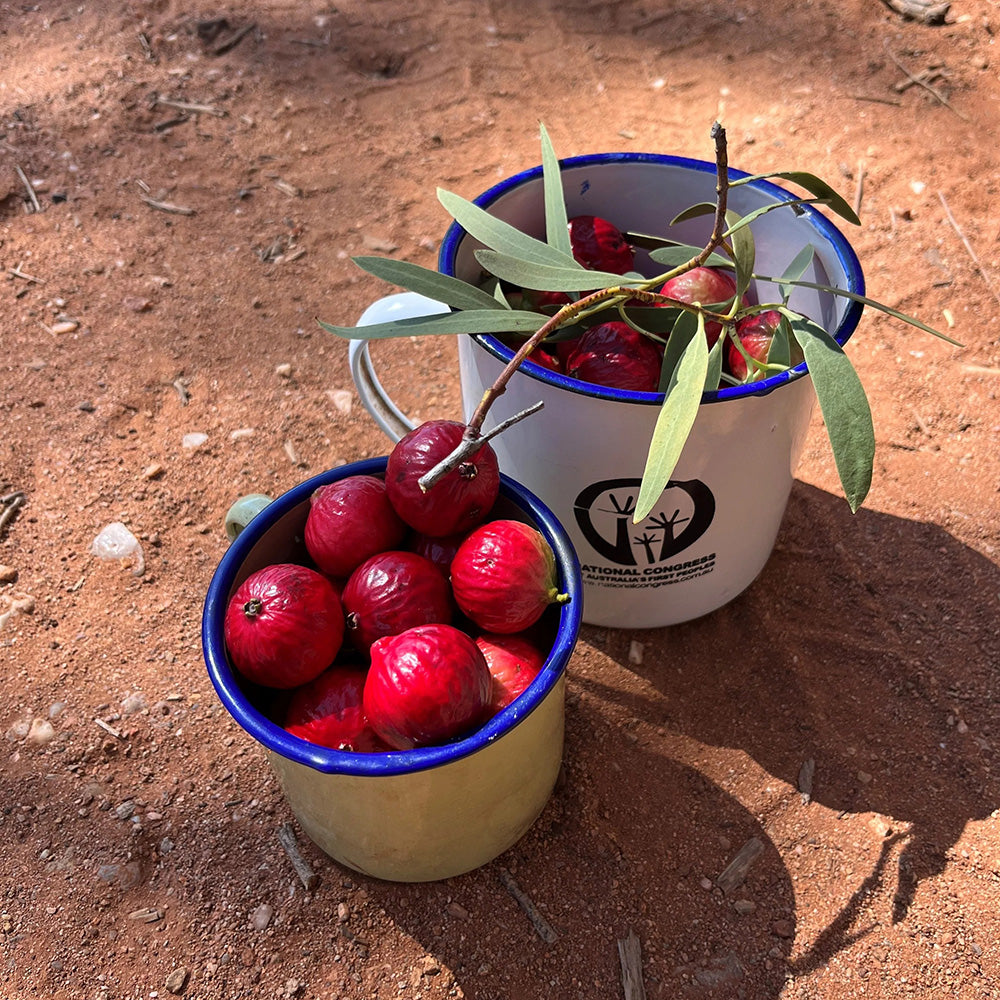
Mangaṯa - Quandong Seeds
Quandong seeds (Santalum acuminatum) are round, puckered seeds which grow on a native peach tree. Tjanpi artists burn holes through quandong seeds and often paint them by hand. These seeds are then strung into jewellery and keychains.
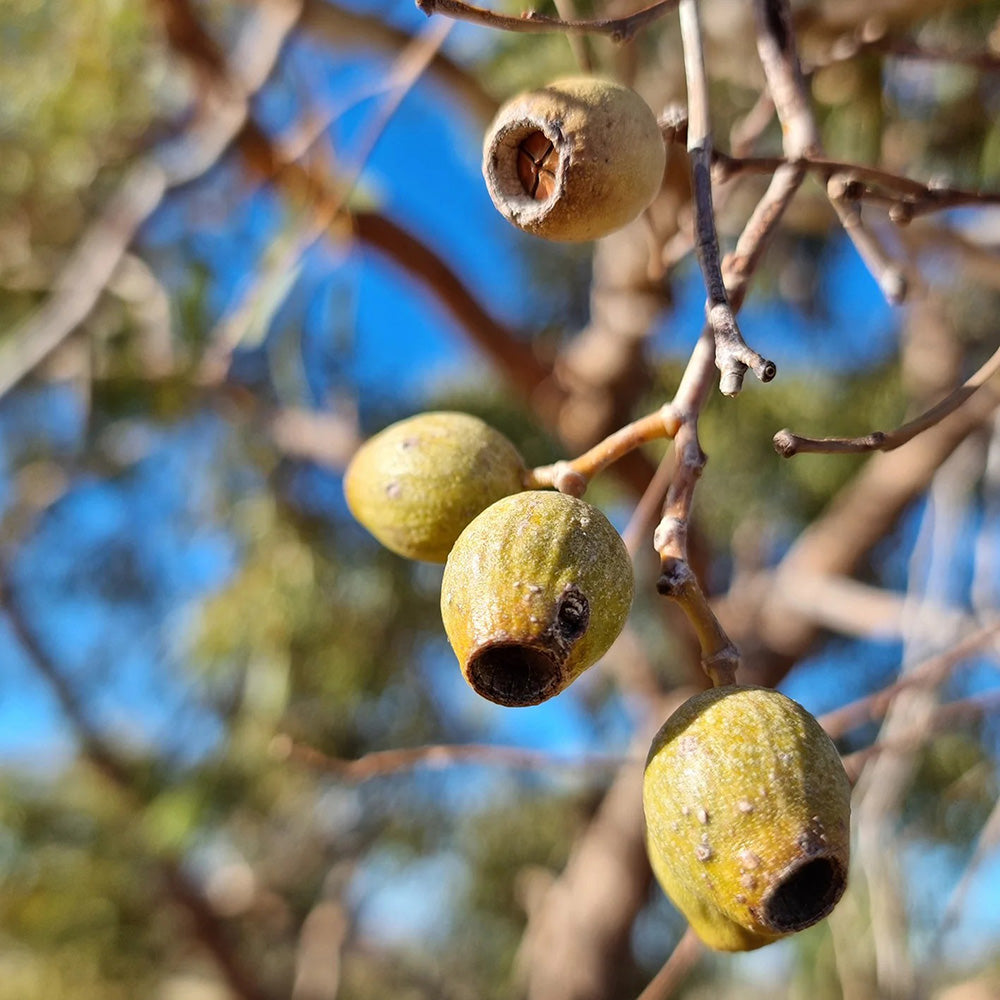
Tatu - Gum Nuts
Gum nuts are a hardened seed from the gum tree (Eucalyptus gummifera). They are pierced then painted or carved by artists and often combined with other seeds to make jewellery and keychains.
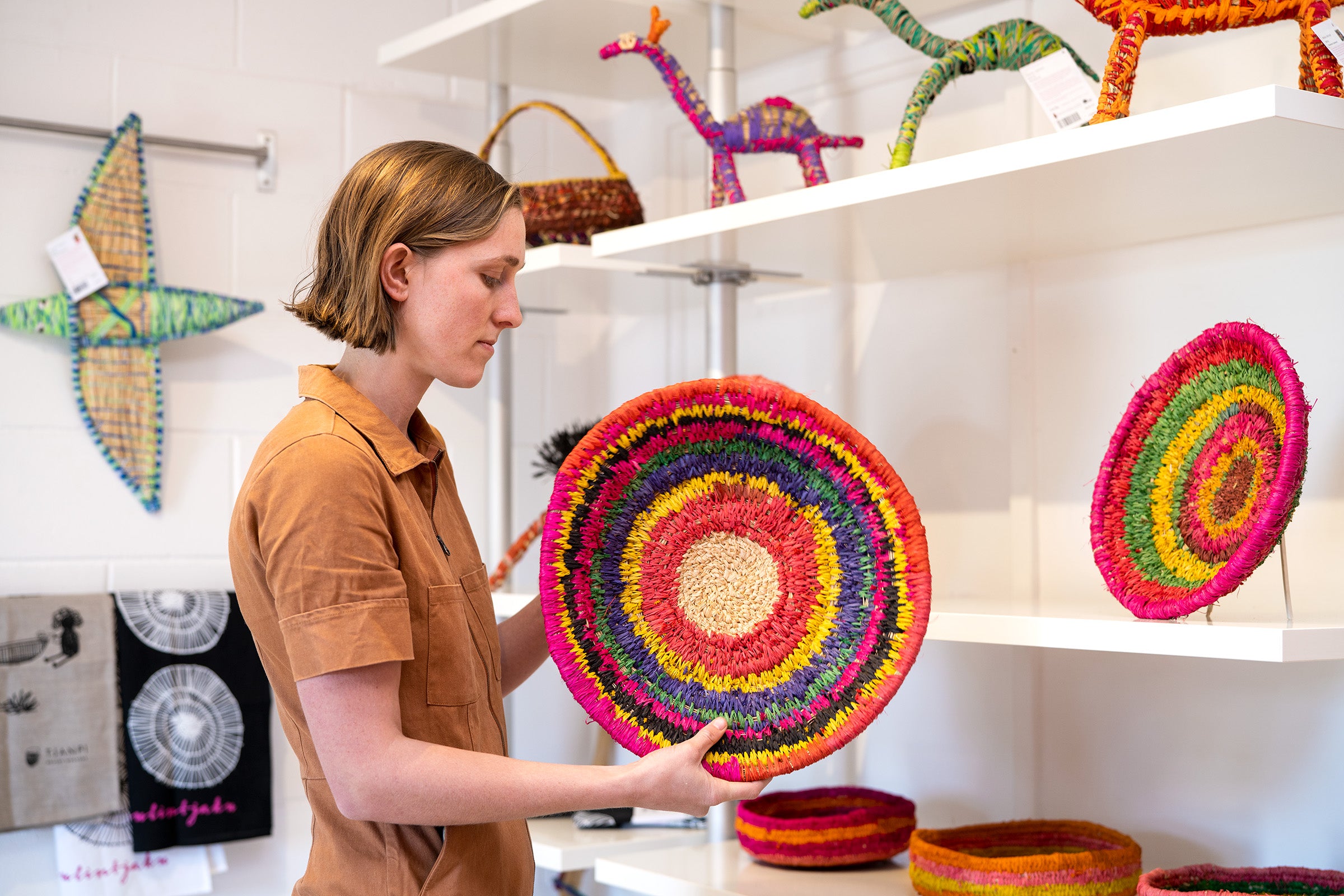
Mparntwe Gallery
Explore the largest collection of Tjanpi artworks at our gallery in Alice Springs. Discover a changing selection of baskets, sculptures, jewellery, books, and merchandise, including products from the NPY Women’s Council Ngangkari team.
Location: NPY Women’s Council, 3 Wilkinson Street, Alice Springs NT 0870 – just follow the pink signs.
Opening hours: Monday to Friday, 10am–4pm (closed weekends, public holidays, and during January).
Contact us: (08) 8958 2377 tjanpi.reception@npywc.org.au
